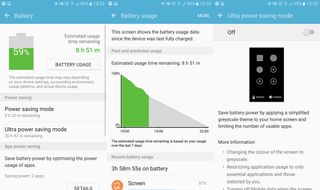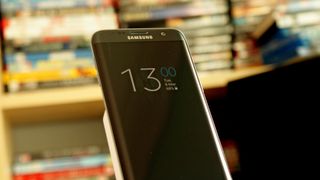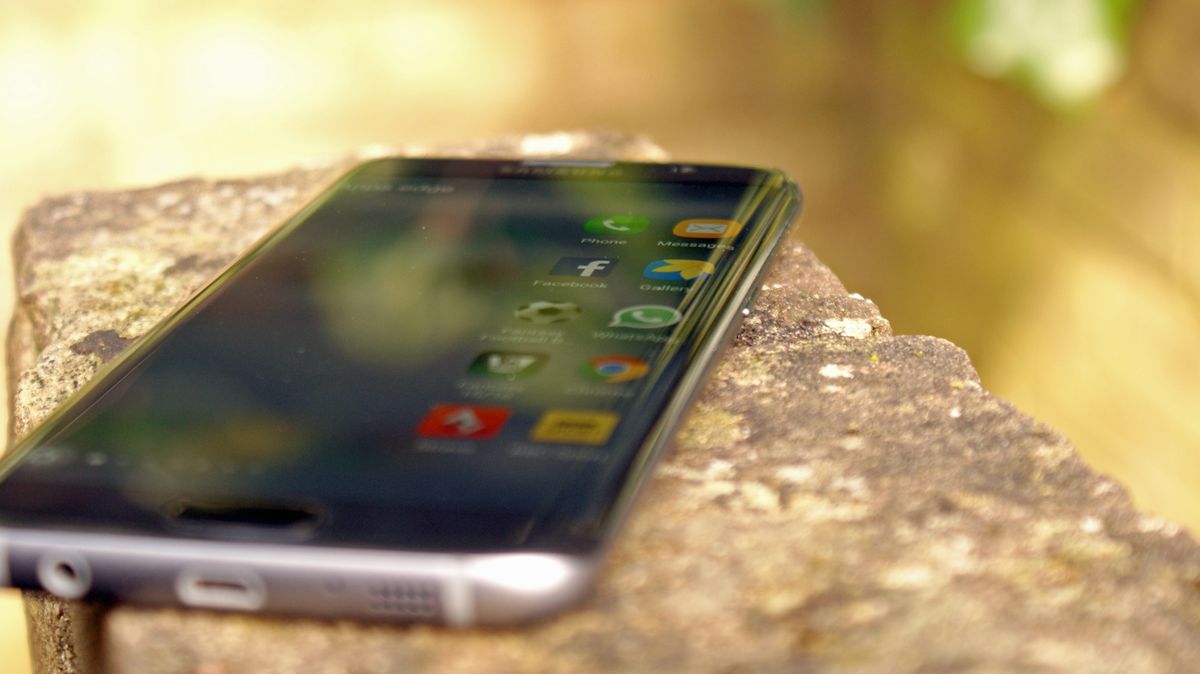Why you can trust TechRadar
On hearing that the Samsung Galaxy S7 Edge packed in a 3,600mAh battery, we had high hopes that it would be able to hold on better than anything before it – and largely, that's true.
Samsung had a real issue on its hands with the Galaxy S6 and S6 Edge: both had batteries that were smaller than the Galaxy S5's, and which struggled to last the day on a single charge.
Performance was worse than the Galaxy S5, which was the first Samsung phone to not die in a heartbeat, and it was a real disappointment as the brand pursued a design win over functionality.

Usually a new phone takes a few days to 'warm up' to optimal battery life, but the Samsung Galaxy S7 Edge was pretty bullet-proof to start with. We noted that in the first three days of use we had around 15-25% battery life by bedtime.
And that was after some pretty intensive use – configuring a few settings, trying out all the different screen and color modes, using the camera, plugging the phone into the Gear VR and showing it off to all the family (who kept watching the same blooming dinosaur video… we must know everything there is to know about that massive-tailed megalizard).
The Galaxy S7 Edge lost 10% battery overnight, which is a little high, but we did have the always-on display enabled though – a repeat test with it turned off (and do not disturb mode enabled) saw the battery drop just 2%, demonstrating that the S7 Edge is pretty good at not drawing too much power when it's asleep.
This is partly to do with upgrades to the Exynos chip, but also thanks to the upgrades that Google has brought to the table with Android Marshmallow – the new Doze mode is more efficient at making sure your phone isn't constantly waking up and checking the network to see if there's any more information to feed you.
We appreciate that the balance is hard to achieve: giving you the information you want when you need it, but knowing when the battery could be saved at less critical times. However, it's good to see that the S7 Edge makes a real step forward here.
Its battery basically felt a little less 'slippy' compared to previous years, where we've noted that just having the phone in our pocket would cause the battery to drain for no reason.

However, after a few more days the Galaxy S7 Edge started to show the telltale signs of poor battery management once again, dropping a few percent here and there rapidly when running multiple apps – noticeably faster than something like the Huawei Mate 8, which is an absolute tank when it comes to battery retention, thanks to a militant attitude to app use when the phone has gone to sleep.
Let's talk numbers here: we ran our standard battery test, charging the phone to 100% and then running a 90-minute full HD video at maximum brightness with various apps syncing wirelessly in the background, and seeing how much the battery dropped.
Intriguingly, the Galaxy S7 Edge fared just as well as its predecessor, showing a very impressive 14% drop. Samsung's claim of 13 hours of HD movie watching seems a bit over the top, but then we did run the test with the phone connected to Wi-Fi and cellular, as most people would do; enabling Flight Mode would have improved things even further.
You can choose to have the basic power saving mode kick in at any point from 25% downwards, and this helps to eke out a little more battery life.
Ultra power saving mode is there for emergencies, but we've found this is best used when you know you're going to need the phone running for long periods of time well before things get critical – it doesn't seem to extend battery life too much if you enable it when you're down to single digits.
What does that mean overall? Well, the Samsung Galaxy S7 Edge offers decent battery life, no doubt about that. It beats many other phablets out there in terms of power management, with the iPhone 6S Plus in particular losing out in the battery test – Apple's device does seem a touch stronger in general power management, but it's very close.
The Galaxy S7 Edge also comfortably beats the 5.5-inch LG G5 and 5.2-inch HTC 10, which both struggled to see out a full day's use on a single charge, as well as the newer iPhone 7 Plus.
So battery life is an improvement on the new Edge. Are you going to feel like you've got one of the longest-lasting phones on the market? No, because Android still isn't set up to work that way.
Amazing battery life comes at the cost of notifications. If you want a phone that can completely shut them down, something like the Huawei range does a great job – but you'll get angry when you miss yet another chat notification because the phone has gone to sleep again.

Gareth has been part of the consumer technology world in a career spanning three decades. He started life as a staff writer on the fledgling TechRadar, and has grew with the site (primarily as phones, tablets and wearables editor) until becoming Global Editor in Chief in 2018. Gareth has written over 4,000 articles for TechRadar, has contributed expert insight to a number of other publications, chaired panels on zeitgeist technologies, presented at the Gadget Show Live as well as representing the brand on TV and radio for multiple channels including Sky, BBC, ITV and Al-Jazeera. Passionate about fitness, he can bore anyone rigid about stress management, sleep tracking, heart rate variance as well as bemoaning something about the latest iPhone, Galaxy or OLED TV.

'We’ve let them down': Sonos gets a new CEO after its disastrous year, and it looks like better times are ahead

SteelSeries Apex Pro TKL Wireless Gen 3 review: a premium gaming keyboard with stellar analog performance – and a price to match

Fortnite Hatsune Miku has leaked and she looks... pretty rough
